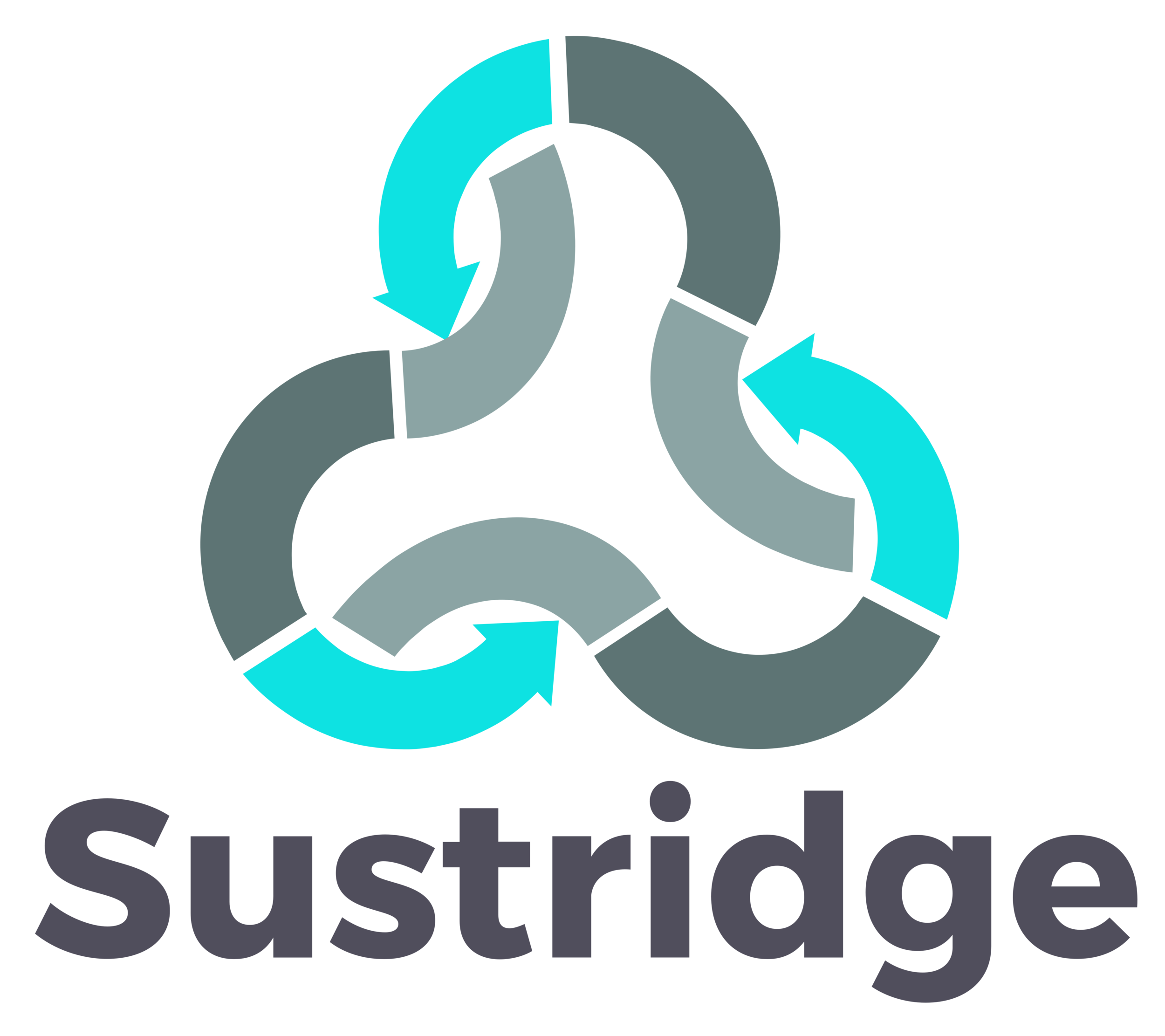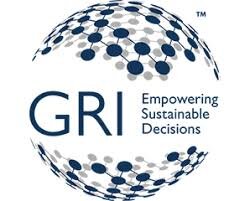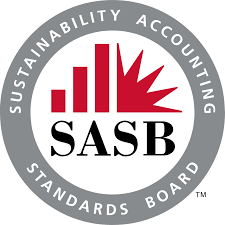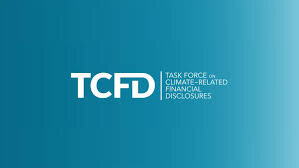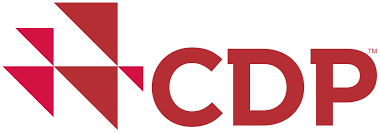Corporate Sustainability Reporting Frameworks and Standards Explained
If you work in the sustainability space you’ve probably heard acronyms like GRI, SASB, TCFD, CDP, and B Corp thrown around, but might not be clear what they all stand for and what the differences are.
These are sustainability reporting frameworks and standards that organizations voluntarily use to report their company’s sustainability initiatives and metrics. Frameworks provide guidance on what to report on, whereas standards prescriptively tell you what you need to report. Stakeholders such as investors, customers, community members and employees are increasingly wanting to know what companies are doing to reduce their impact on the planet and people. I thought I would share with those in the sustainability space the intent of each framework or standard, what is included in each and why an organization might choose one over the other.
Corporate sustainability reporting, including TCFD, VC, CSR reporting framework, sustainability reporting standards, integrated reporting framework, and the work of organizations like the Value Reporting Foundation, International Integrated Reporting Council, and International Sustainability Standards Board, has become an essential aspect of business strategy in today's world. A wide array of frameworks and standards have been developed to help companies measure, track, and communicate their sustainability performance.
Overview of Each Sustainability Reporting Framework and Standard
Global Reporting Initiative
The Global Reporting Initiative (GRI) is the most widely used global standard for sustainability reporting and launched in 2000. From the GRI website, “Of the world's largest 250 corporations, 93% report on their sustainability performance and 82% of these use GRI's Standards to do so.” (GRI at a Glance). GRI splits their standards into two buckets, universal standards and topic-specific standards. The universal standards have three sections: foundation, general disclosures and management approach. The topic-specific standards are optional and include three sections: economic, environmental, and social. Organizations can pick and choose which standards within the topic-specific sections they’d like to report on.
The intent of the GRI reporting is to get a more holistic view of the organization by including relevant company information, governance structure, economic performance and location of facilities, along with sustainability metrics like how much annual carbon was emitted, how much training and education employees receive, or how local communities are impacted. As we all know, sustainability means more than environmental sustainability, it also includes people, community, governance, transparency and accountability. Organizations can better measure and understand their most critical impacts on the environment, society, and the economy using the GRI standards.
Organizations can also better understand and communicate their sustainability risks and opportunities to stakeholders and how those risks and opportunities present potential financial risks/opportunities for the organization. Annual reporting with GRI’s comprehensive and holistic approach can lead to many positive outcomes for a business such as influencing strategy, streamlining processes, benchmarking, improving brand loyalty and recognition, mitigating negative social, environmental and governance impacts and informing stakeholders of the organization’s tangible and intangible assets.
Sustainability Accounting Standards Board
The Sustainability Accounting Standards Board (SASB) was founded in 2011. SASB includes 77 industry-specific standards spread across five sustainability dimensions: environment, social capital, human capital, business model and innovation and leadership and governance. They are designed to assist companies in disclosing financially material sustainability information to investors. “SASB standards enable businesses around the world to identify, manage, and communicate financially-material sustainability information to their investors” (SASB.org).
The standards are organized by industry and inform companies specifically what they should be reporting based on the industry. For example, if your organization is in the Apparel, Accessories, & Footwear consumer goods industry you should report management of chemicals in products, labor conditions in the supply chain and raw materials sourcing among others. The SASB Materiality Map provides more detail on how to report those standards.
Investors are increasingly asking organizations to report on Environmental, Social and Governance (ESG) issues because they want to know how long-term issues like climate change, urbanization or resource constraints are going to impact the organization and therefore their investment. SASB helps organizations increase transparency, better manage risk, create stronger brands and improve long-term performance while better communicating with investors about their sustainability performance.
SASB was designed to be complementary to other sustainability frameworks and standards such as GRI, TCFD and CDP, so you shouldn’t necessarily pick one over the other. Each set of standards and frameworks have a different and specific purpose that when reported together, helps increase the transparency around an organization’s sustainability actions.
To better understand how a SASB report looks like, you can check these SASB report examples from several corporations, which illustrates how they disclose their sustainability performance in alignment with the SASB standards.
SASB vs GRI
While SASB's approach is to identify the most financially material sustainability issues that are specific to each industry and provide guidance on how to report on those issues; GRI's approach is more comprehensive, covering a wide range of sustainability issues and providing guidance on how to report on those issues in a standardized way.
An example of the use of SASB is in the banking sector, where SASB has identified issues such as climate change, fair lending, and data security as material sustainability issues that banks should report on.
A practical use of GRI reporting is in the food and beverage industry, where GRI provides guidelines on how to report on issues such as food safety, worker health and safety, and environmental impacts.
Overall, both SASB and GRI provide valuable resources for companies looking to report on their sustainability performance, and the choice of which to use depends on the specific needs and priorities of each company.
Task Force on Climate-related Financial Disclosures
The Task Force on Climate-related Financial Disclosures (TCFD) was established in 2015 at the request of G20 Finance Ministers Central Bank Governors asking the Financial Standards Board (FSB) to review how the financial sector can take account of climate-related issues. The TCFD carefully selected 32 international members including capital insurers, large non-financial companies, credit rating agencies, and others to help develop the framework. The first recommendations were released in 2017. As of February 2020, over 1,000 organizations representing a market capitalization of over $12 trillion support the TCFD disclosures. However, expressing support doesn’t always translate quickly into implementing the disclosures.
The intent of the TCFD is to “develop recommendations for voluntary climate-related financial disclosures that are consistent, comparable, reliable, clear, and efficient, and provide decision-useful information to lenders, insurers, and investors.” (TCFD). Through TCFD, companies can better measure and evaluate their own risks and the risks of their suppliers and competitors. Investors can make better informed decisions on how to allocate their capital and lenders, insurers and underwriters can better evaluate their risks and exposures over the short, medium and long-term.
The recommendations are structured around four thematic areas: governance, strategy, risk management and targets and metrics. Eleven recommended disclosures feed into those four categories. Ideally, an organization would include these recommended disclosures in their financial statement but many will incorporate into their sustainability report. The TCFD is a framework and their disclosures are voluntary recommendations so organizations have more flexibility in how they choose to disclose the information. Whereas, the GRI, SASB, CDP, and B Corp are more metrics driven and specifically tell you what to include for each standard and questionnaire.
TCFD vs SASB
While TCFD's approach is to provide guidance on the way companies can report on climate-related risks and opportunities; SASB's approach is to identify the financially material sustainability issues that are specific to each industry and provide guidance on how to report on those issues.
Overall, both TCFD and SASB provide valuable resources for companies looking to report on their sustainability performance, and the choice of which to use depends on the specific needs and priorities of each company.
CDP
CDP, originally called the Carbon Disclosure Project, was founded in 2000 and has since changed their name to CDP because they’ve expanded their scope from solely carbon. Over 8,400 companies have reported through CDP and over 800 cities disclosed environmental information through CDP.
CDP’s disclosure includes three questionnaires for corporations - climate change, forests, and water security - and one questionnaire for cities typically due every July. Investors and customers might request environmental information from companies via CDP and those requests inform which combination of surveys companies should complete. Within each questionnaire you have the option to respond to additional supply chain questions if your customers and/or investors requested it. Cities self-report (no one is requesting disclosure information). Organizations can also self-report if their customers and/or investors do not request disclosure. CDP uses a probability framework to assess the likelihood and potential impact of climate change on businesses and investors. In addition to its probability framework, CDP also provides a market entry framework to help companies understand and enter the market for low-carbon solutions.
CDP includes a section “connection to other frameworks” through the questionnaire and provides the relevant disclosure from other consulting frameworks such as TCFD and the United Nations Sustainable Development Goals. CDP’s most commonly used questionnaire is climate change, which requests information from companies such as CO2 emissions, CO2 goals and targets, their climate change strategy, understanding of climate risks, efforts to reduce emissions in the supply chain, and much more.
Some organizations report to CDP because their investors and/or customers made a request through CDP while other organizations might electively choose to report to CDP because it helps protect and improve their company’s reputation, boost competitive advantage, get ahead of regulation, uncover risks and opportunities and track and benchmark progress. Cities may choose to report because they can gain insight and feedback on their climate action plan, compile all environmental data in one place, track their city’s sustainability and climate efforts annually and many other benefits.
B Corp
The B Corp movement began in 2006, and in 2007, 82 B corps were certified. Currently, more than 3,300 organizations are certified B Corps in over 70 countries and 150 different industries. The word B Corp is not to be confused with benefit corporation. A benefit corporation is a legal business structure such as limited partnership (LP), S Corp or nonprofit corporation. By using the benefit corporation business structure, the organization must consider social and environmental factors in addition to financial interests of shareholders. B Corp certification requires your company to become a benefit corporation if such form of legal entity is available in the state of incorporation within two years of certifying as a B Corp.
A certified B Corp is a business that meets “the highest level of verified social and environmental performance, public transparency and legal accountability to balance profit and purpose” (About B Corps). You may know a few, Patagonia, Allbirds, Method, Ben and Jerry’s, New Belgium Brewing Company and Fetzer Vineyards. To become a certified B Corp your organization must complete the B Impact Assessment (BIA) which “evaluates how your company’s operations and business model impacts your workers, community, environment and customers.” It also commits you to integrating stakeholder consideration into the governance structure. B Lab, a non profit third party verifier, reviews the completed BIA determining if your organization meets the minimum 80-points for certification. Once you pass, you must update your BIA and verify your updated scores every three years to maintain certification.
The intent of the B Corp certification is to fundamentally change the way business is done from solely prioritizing profits to include people and the environment as equal stakeholders. B Corp is known to have a much deeper focus on the social aspect of sustainability than other frameworks and standards. The B Impact Assessment takes a look at employee and supply chain diversity, gender equity, company benefits and health care programs, wellness programs, and support for local economies along with the traditional environmental metrics such as GHG emissions, water, waste etc.
Organizations pursue B Corp certification because they want to be part of a movement for good business, they want to join the conversation that business can solve social and environmental problems, they want to attract and retain top talent, they want to improve impact, and they want their company to stand out and amplify and protect their mission.
Where Do These Frameworks and Standards Overlap and Differ?
Frameworks don’t prescribe metrics. Standards prescribe metrics. From our list of frameworks and standards, TCFD is the only framework because they do not explicitly tell you what metrics to disclose. GRI and SASB are standards because they tell you exactly what to disclose. CDP borders on the standards side since it is more prescriptive in what you need to disclose, but it’s a questionnaire submission and responses are not typically found in annual reports like you would with GRI and SASB. B Corp certification fits into both being a framework because you are reshaping how your business is run by placing purpose up front with profit, but you are also answering a prescriptive questionnaire to achieve certification and must submit a new questionnaire every three years.
Each framework and standard has a distinct purpose and was designed with a specific audience in mind, though some have incorporated important components of the others (CDP has worked to incorporate the key disclosures from TCFD). SASB and TCFD are both focused on investors as their audience, but approach it from different angles because the TCFD is focused on climate change risks and opportunities whereas SASB has methodically selected key ESG material issues based on the industry that could impact the financial performance of an organization. GRI is more focused on quantifying your organization’s overall sustainability impacts and communicating that to a wider audience of many different stakeholders.
CDP and GRI have some overlap. For example, if you disclose tons of CO2 emitted, how you are managing emissions in the supply chain and your approach to managing climate change risks, you have answered CDP and GRI questions. However, CDP requires you to submit a questionnaire through their online portal whereas GRI is used to inform the development of your company’s sustainability report (typically public facing). Most organization’s don’t include their full CDP responses in their annual sustainability report, but some may link to it. CDP awards letter grades to organizations based on their disclosures and if you earn a high mark such as an A, organizations usually showcase their high score in their annual sustainability report.
The B Impact Assessment for B Corp certification contains many of the same environmental metrics found in GRI, but goes into much more detail when looking at social aspects in operations and the supply chain such as diversity and inclusion, pay equity, living wage, employee benefits, low income communities and local economies. In addition, the assessments typically are not public facing unless the B Corp is a wholly owned subsidiary. In this case, B Lab requires increased levels of transparency.
In sum, each framework and standard is unique and one cannot really be substituted for another, though there is some overlap in certain areas.
Which Sustainability Reporting Framework or Standard Should my Organization Use?
It really comes down to prioritization. Is your company trying to satisfy the endless ESG questions from investors, working toward achieving awards and name recognition for being a sustainability leader, responding to requests from customers, or demonstrating the sustainability value of your organization? If your manager asks you to pick a standard or framework and respond to it, start asking “why” and dig deeper into what the benefits might be of using one or multiple standards or frameworks. As shown above, each one has a different intent so before jumping into any, know what your intent is for sustainability reporting and what your company needs to get out of a specific standard or framework. Who is the report intended for and who will the main audience be? What are the objectives of the report and what do you want to communicate? Reporting on these standards and frameworks can be a daunting task, but you can start small by answering the questions you have the answers to and build upon your responses each year. We can’t manage what we don’t measure so get out there and start collecting all that data!
Article written by: Josh Prigge and Dana Wilke
